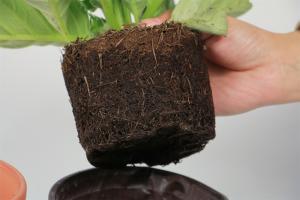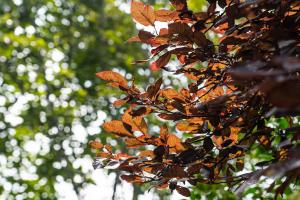Why Is Standing Water Bad for Outside Plants
Water is essential for plant growth and development. However, too much of it can be detrimental. Standing water in the soil, especially for an extended period, can harm plants in numerous ways. In this article, we will discuss the importance of proper drainage and the reasons why standing water is bad for outside plants.
Blocked Oxygen Supply
One of the significant ways standing water harms plants is by blocking the oxygen supply. The root system of plants needs oxygen to grow and survive. When soil becomes waterlogged, pockets of trapped water starve the roots of essential air, causing them to suffocate and die. When the root system dies, the entire plant is at risk, and it may not survive.
Promotes Diseases
Standing water also promotes the growth of plant diseases. Water creates a breeding ground for bacteria and fungi, which can lead to the spread of plant infections. These infections can be difficult to control and, in some cases, may even kill the plant. Additionally, standing water can attract pests that are harmful to plants, such as mosquitoes and gnats.
Root Rot
An accumulation of standing water in the soil can cause root rot, which is a severe fungal infection that attacks the roots of plants. Root rot occurs when the soil remains moist for an extended period, leading to the growth of fungal spores. Root rot can lead to the destruction of the root system, ultimately killing the plant. Symptoms of root rot include yellowing leaves, premature leaf drop, and stunted growth.
Nutrient Deprivation
Plants need essential nutrients, such as phosphorus, nitrogen, and potassium, to grow and produce fruits and flowers. If the soil is waterlogged, the roots cannot efficiently absorb these nutrients, resulting in malnutrition. The blocked oxygen supply mentioned earlier also contributes to this nutrient deprivation since oxygen is needed to transport nutrients from the soil to other parts of the plant. This malnutrition can affect the plant's growth rate, cause wilting, and decrease its resistance to pests and disease.
Conclusion
In conclusion, standing water is harmful to outside plants because it blocks oxygen supply, promotes diseases, causes root rot, and leads to nutrient deprivation. Proper drainage is essential to ensure the health and survival of plants. Drainage systems such as sloped terrain, drainage tiles, and swales can help prevent standing water. Additionally, regularly inspecting your garden and removing debris, such as leaves and rocks, can ensure that water runs off correctly.

 how many times do yo...
how many times do yo... how many planted tre...
how many planted tre... how many pine trees ...
how many pine trees ... how many pecan trees...
how many pecan trees... how many plants comp...
how many plants comp... how many plants can ...
how many plants can ... how many plants and ...
how many plants and ... how many pepper plan...
how many pepper plan...






























